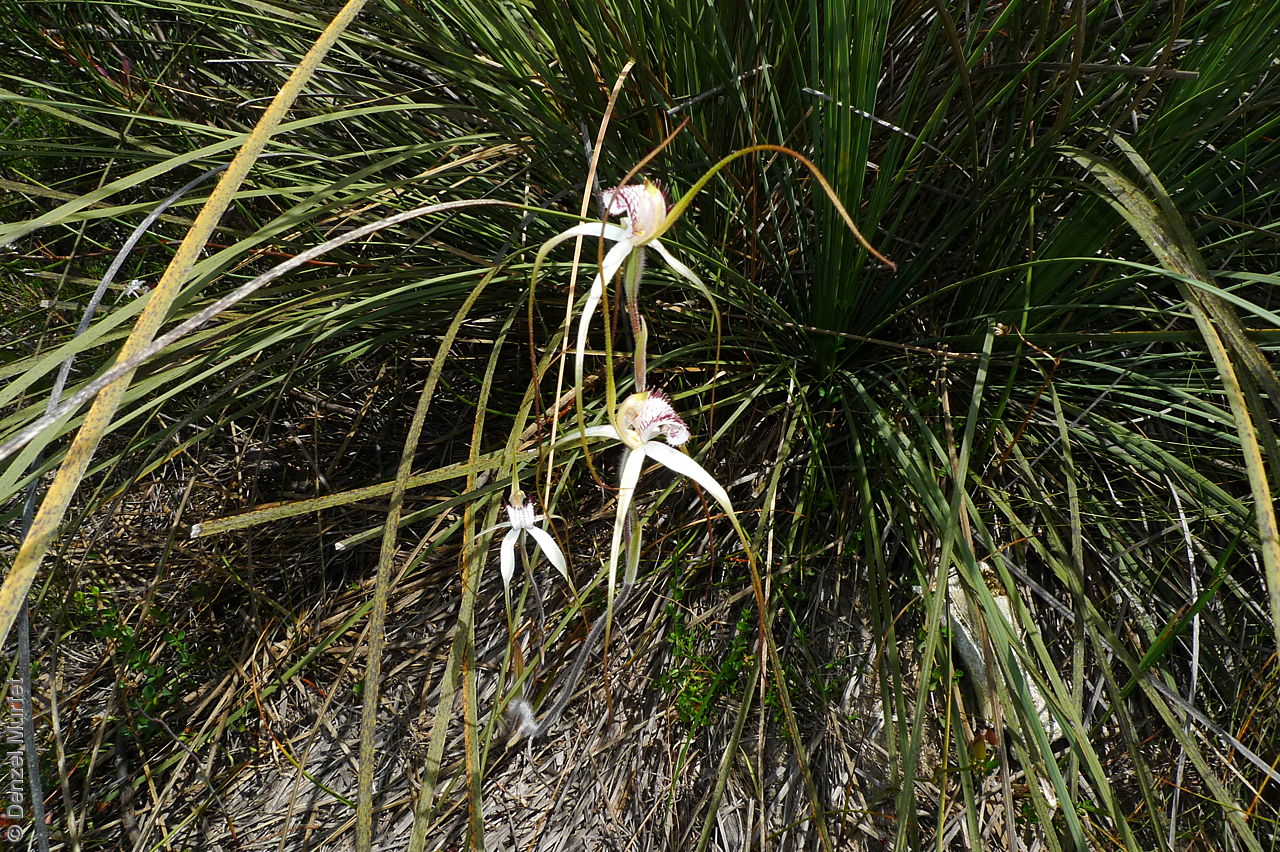
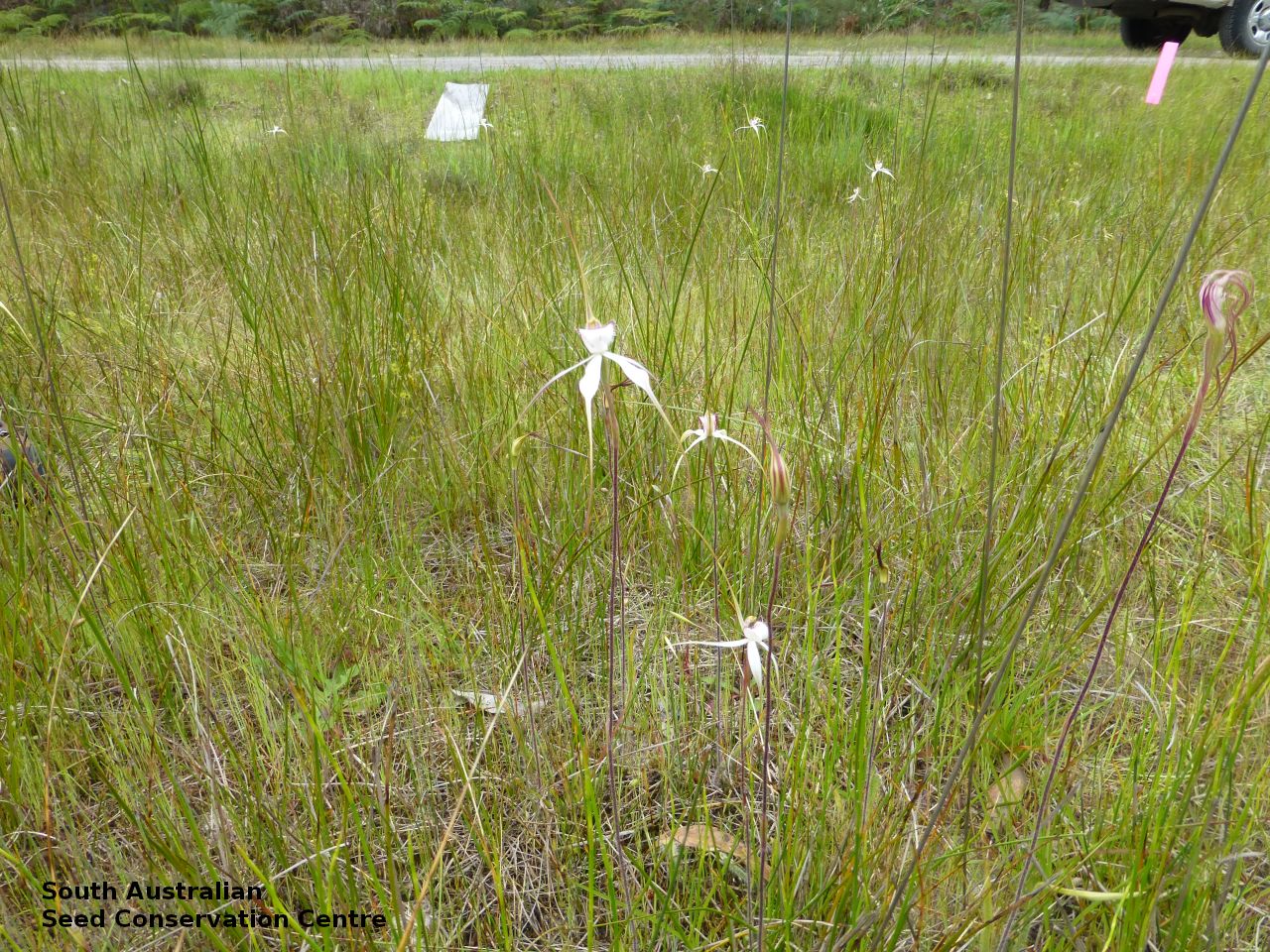
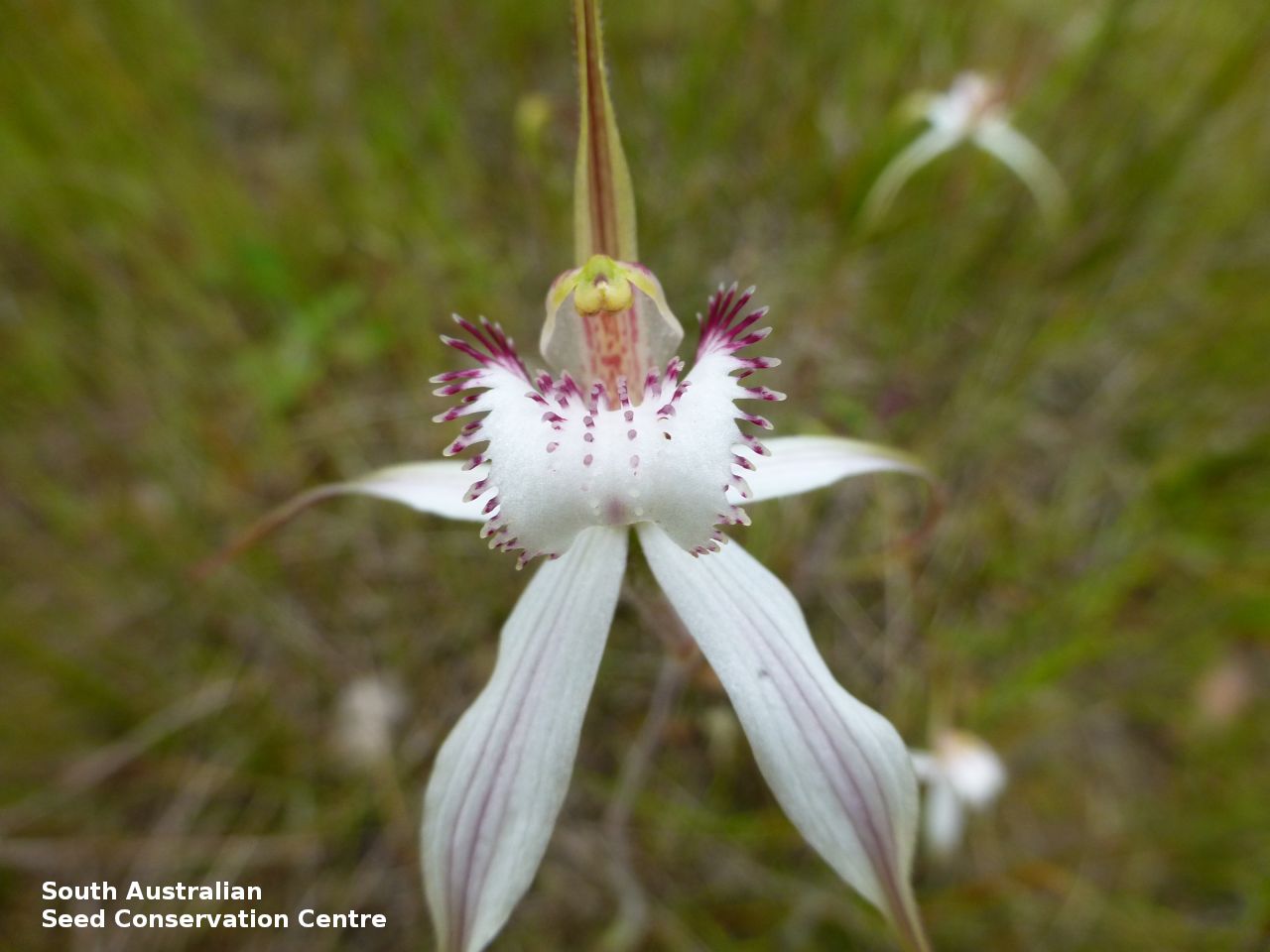
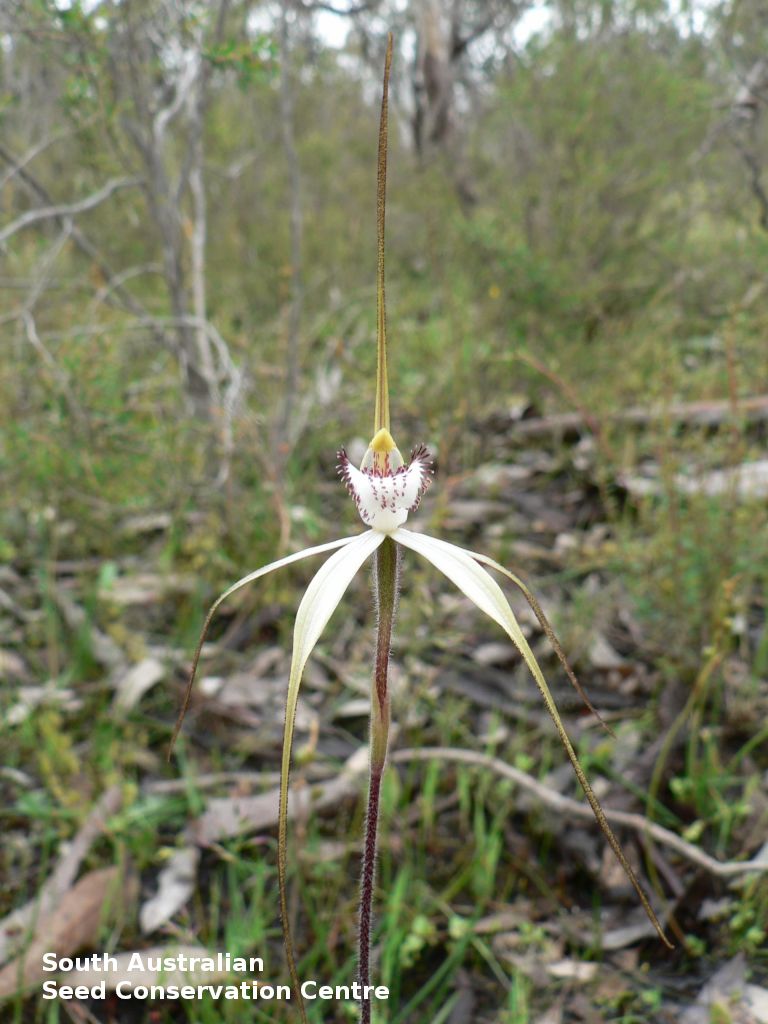
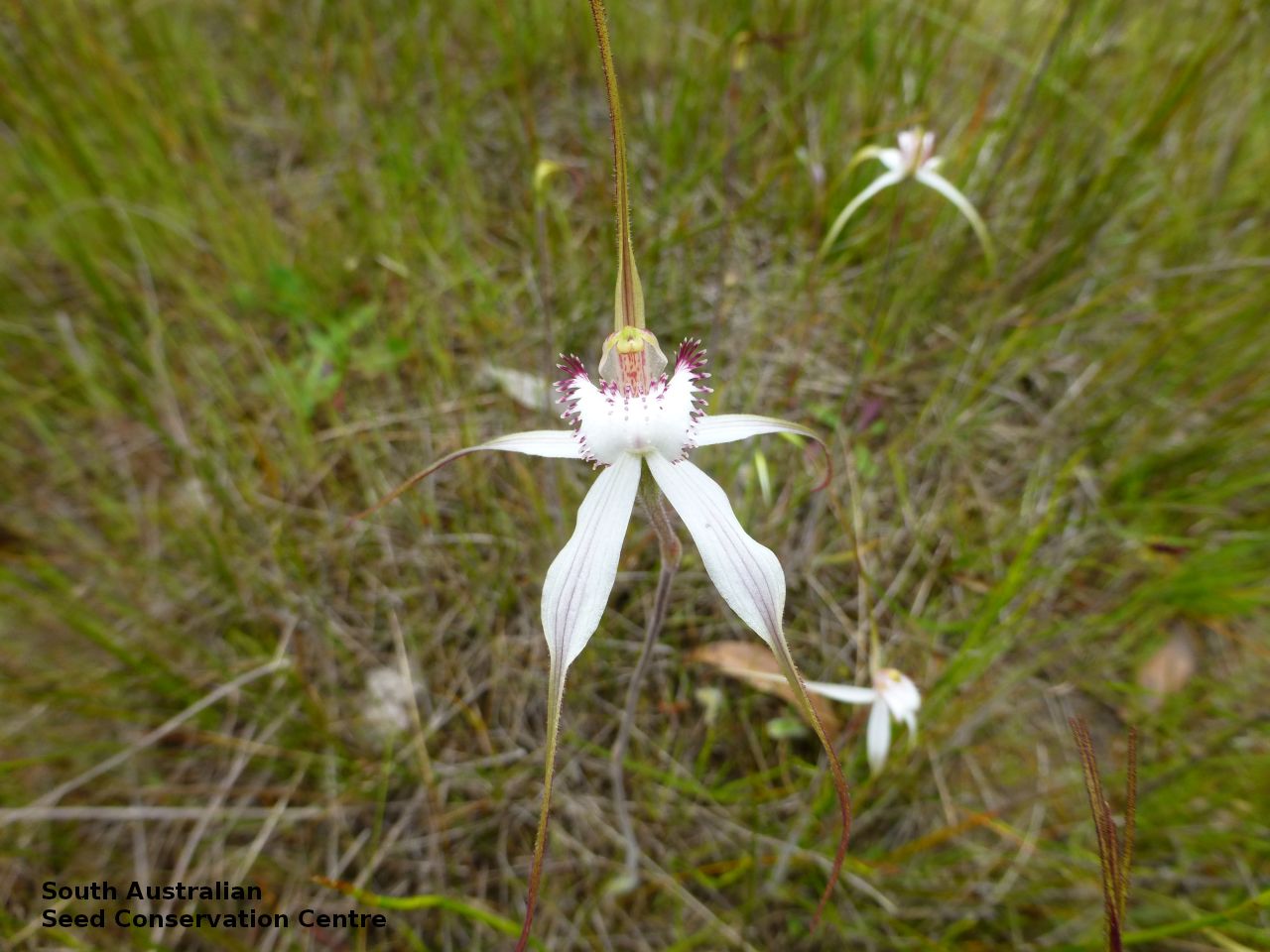
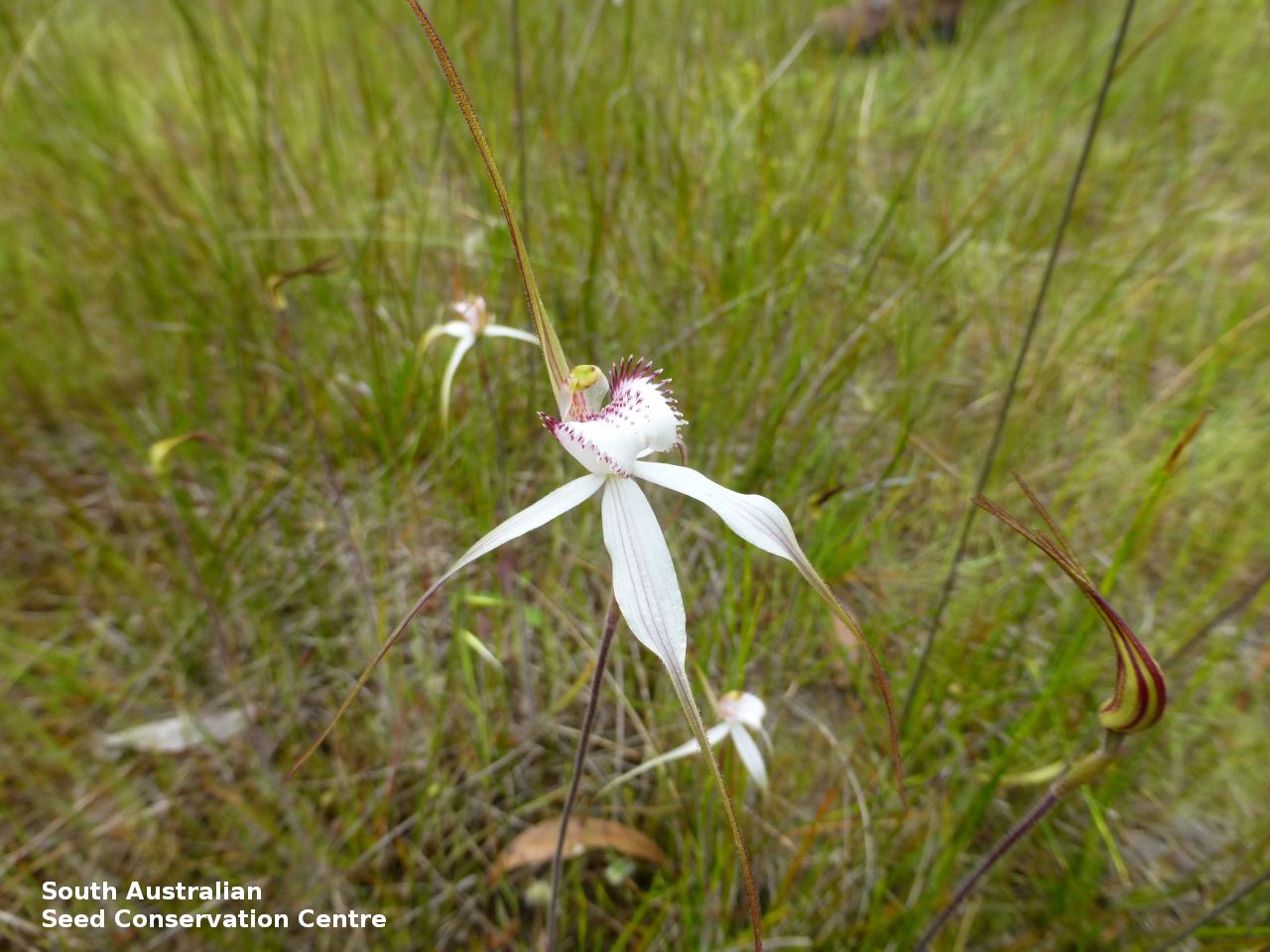
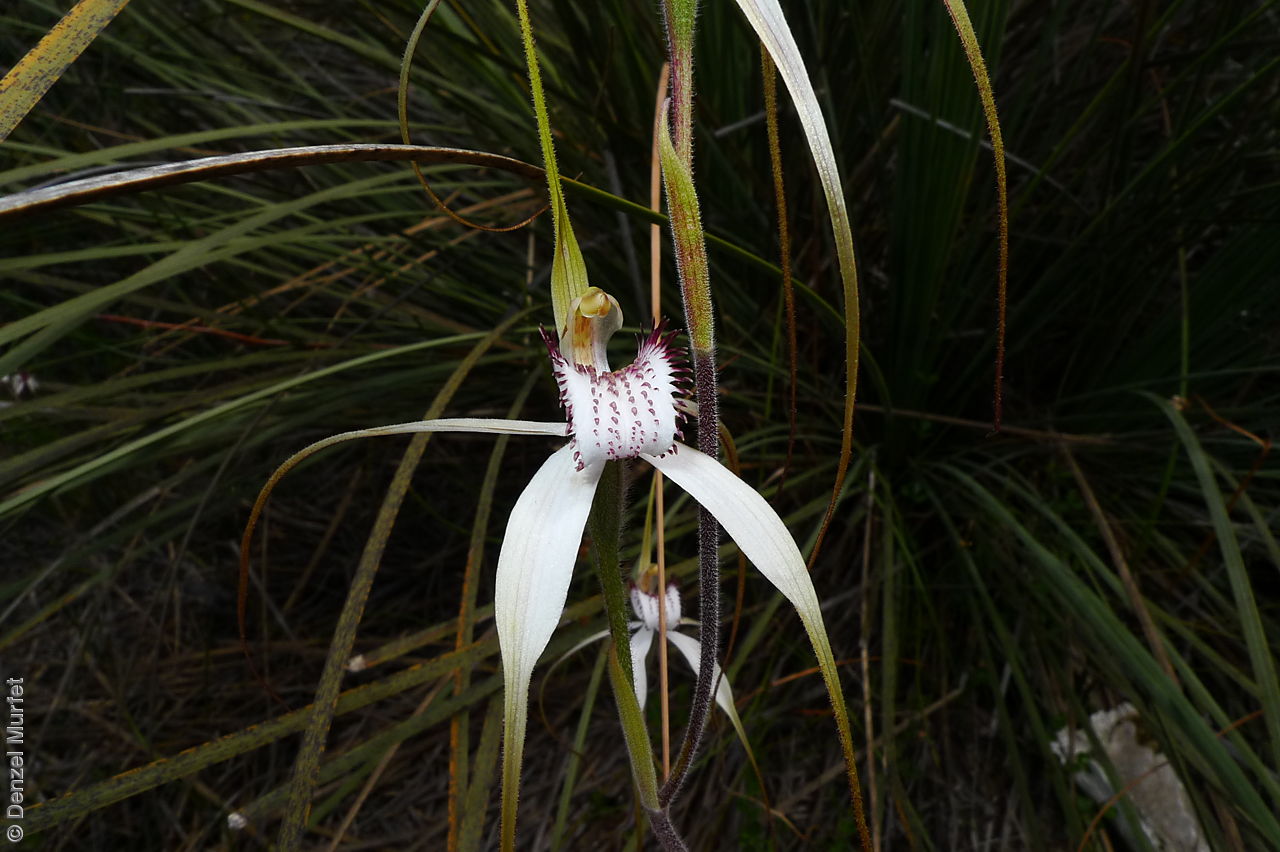
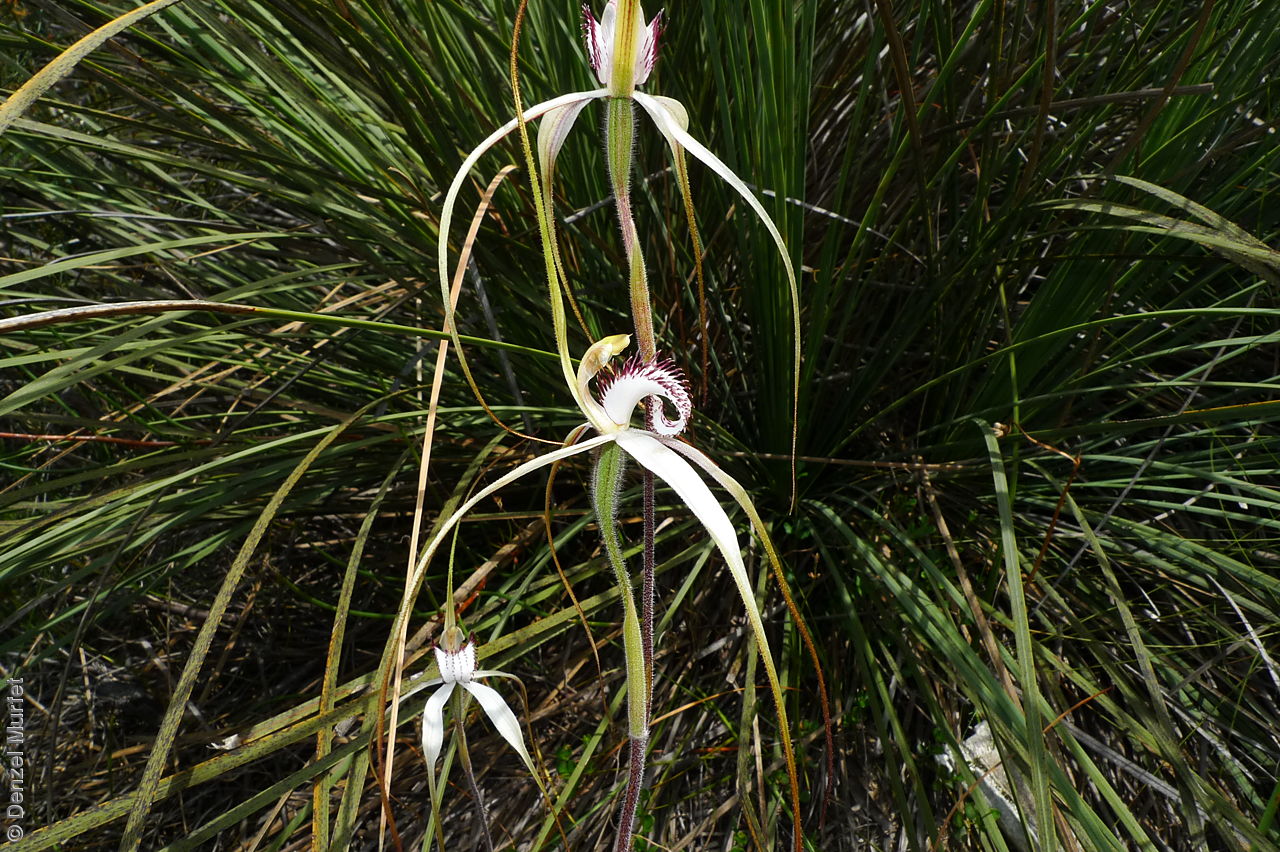
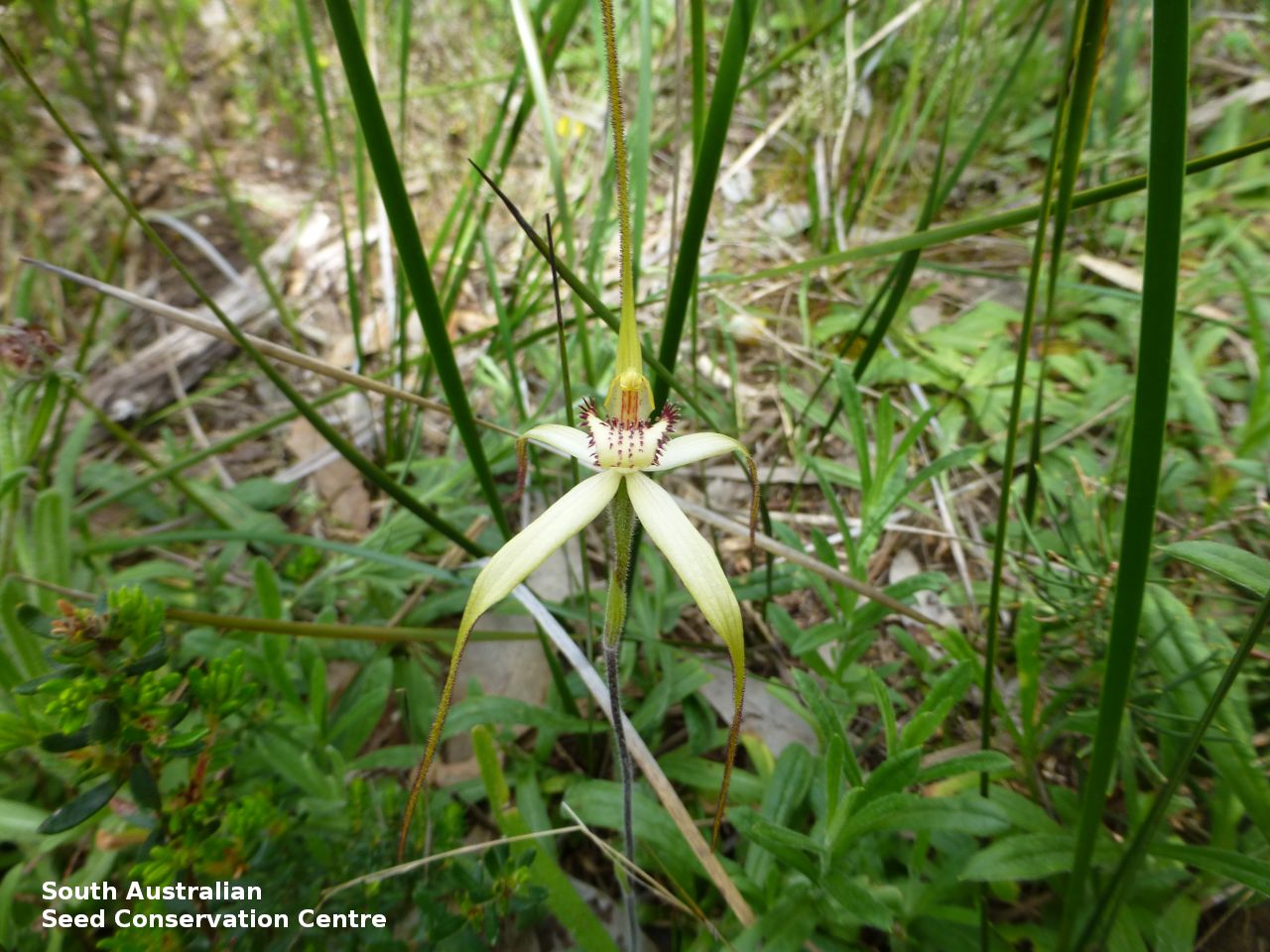
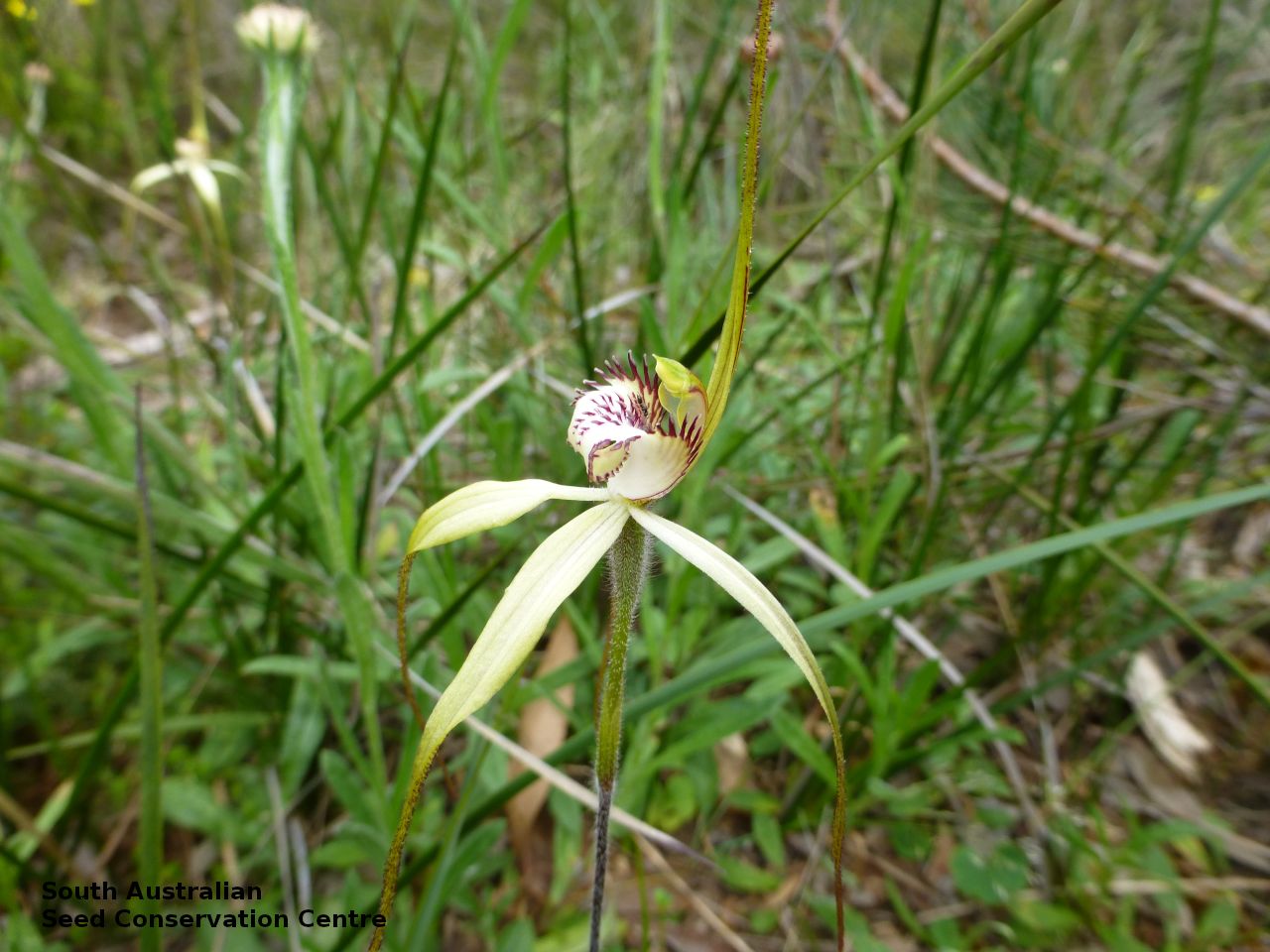
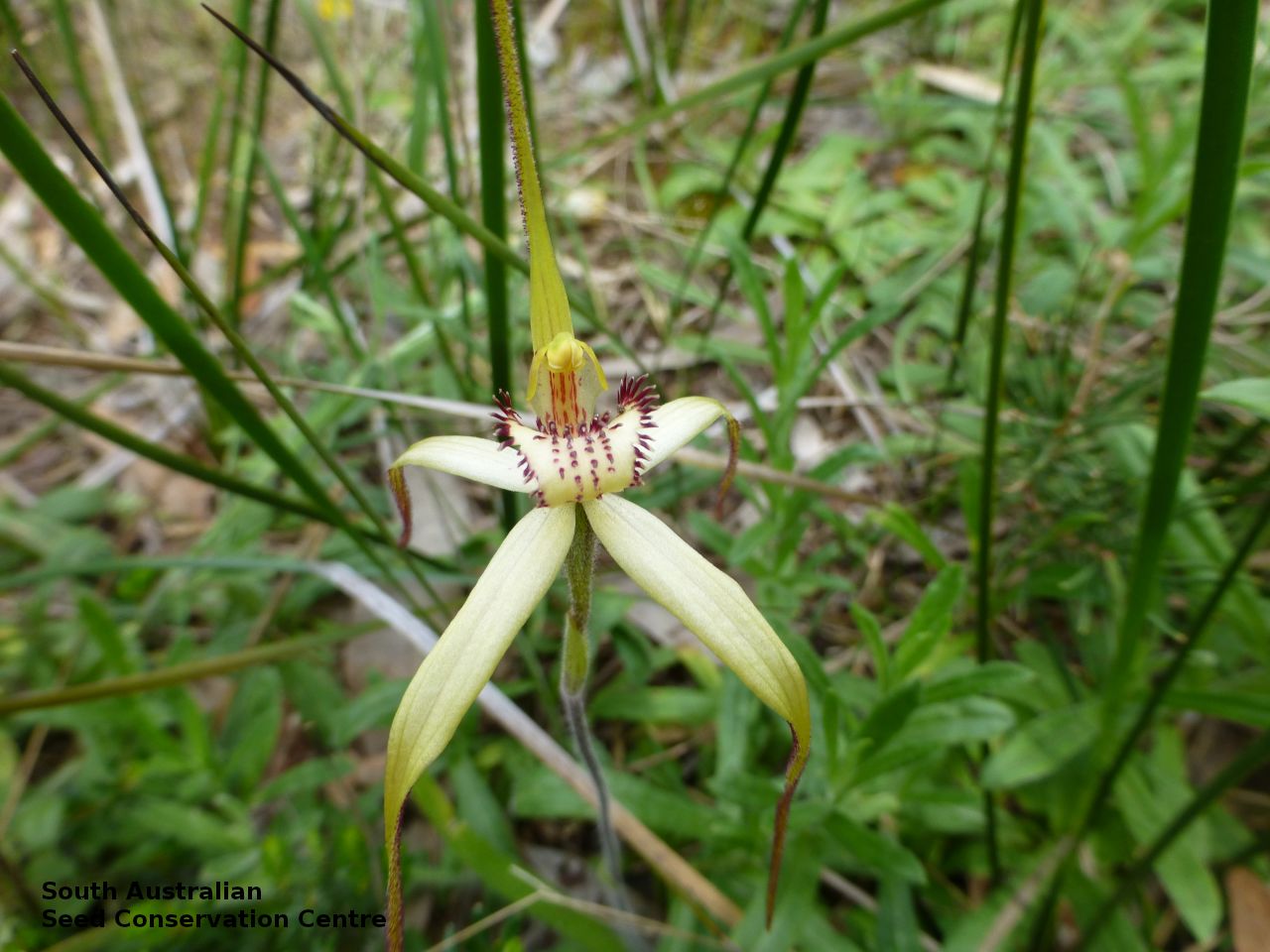
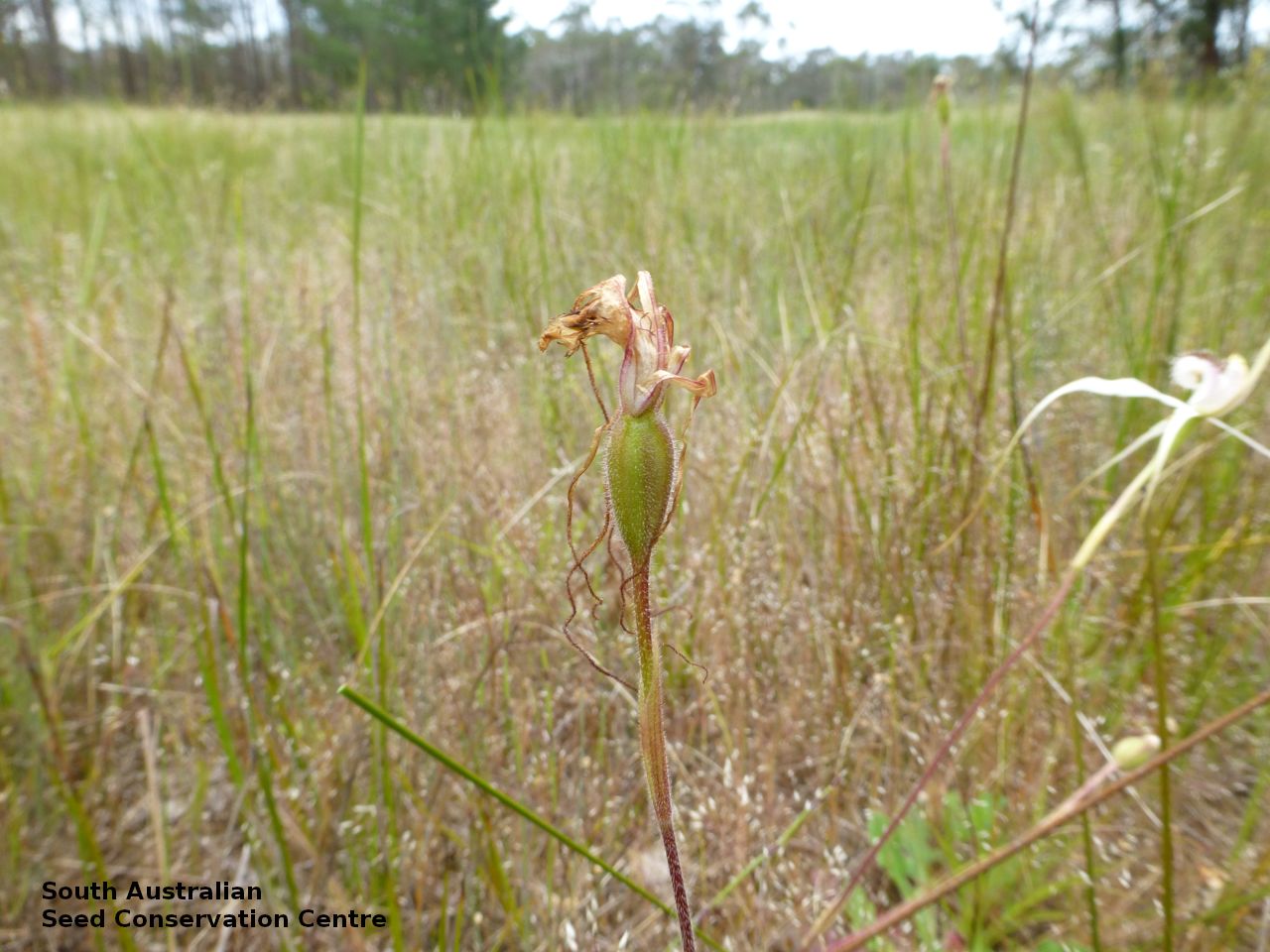
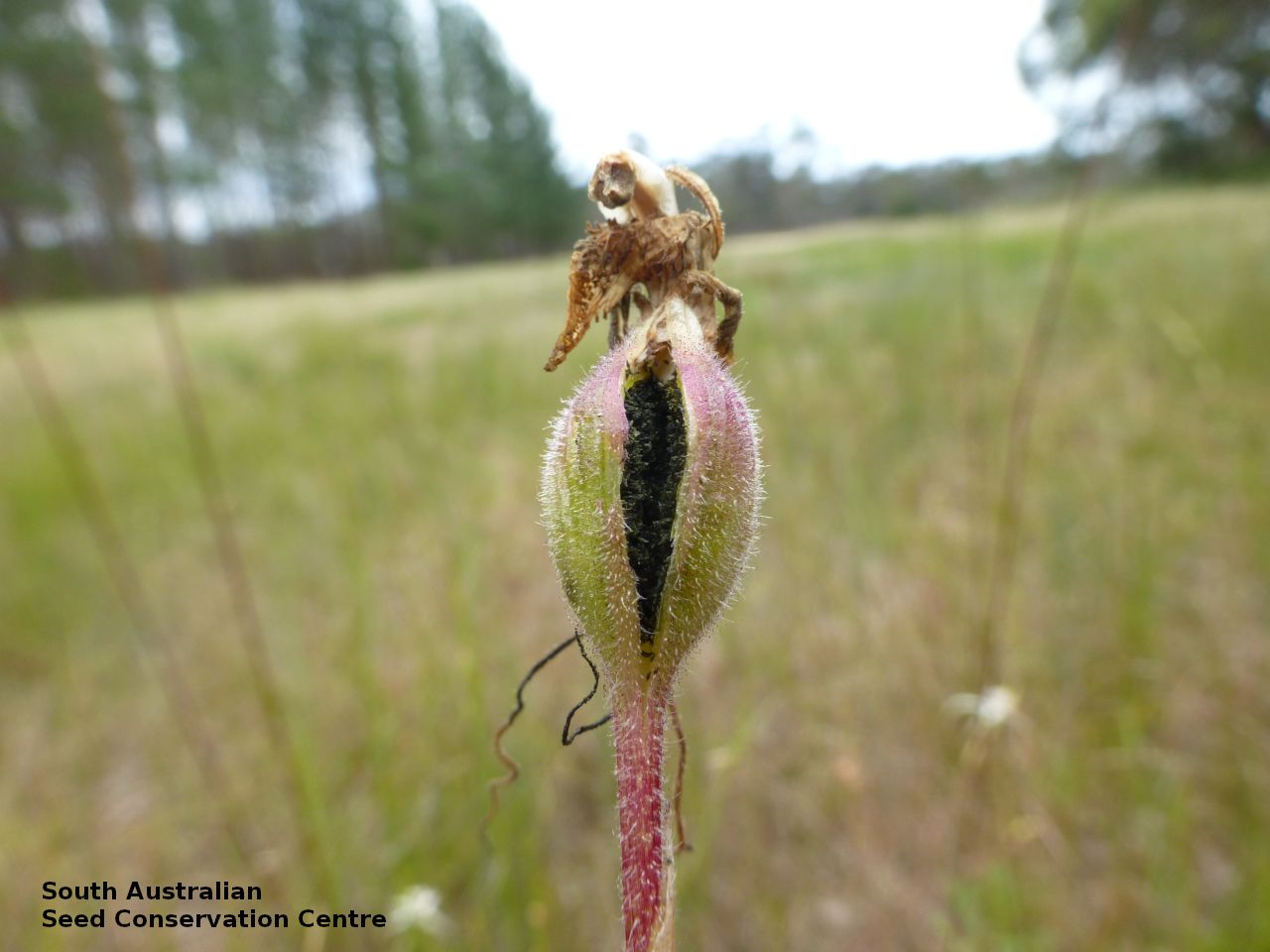
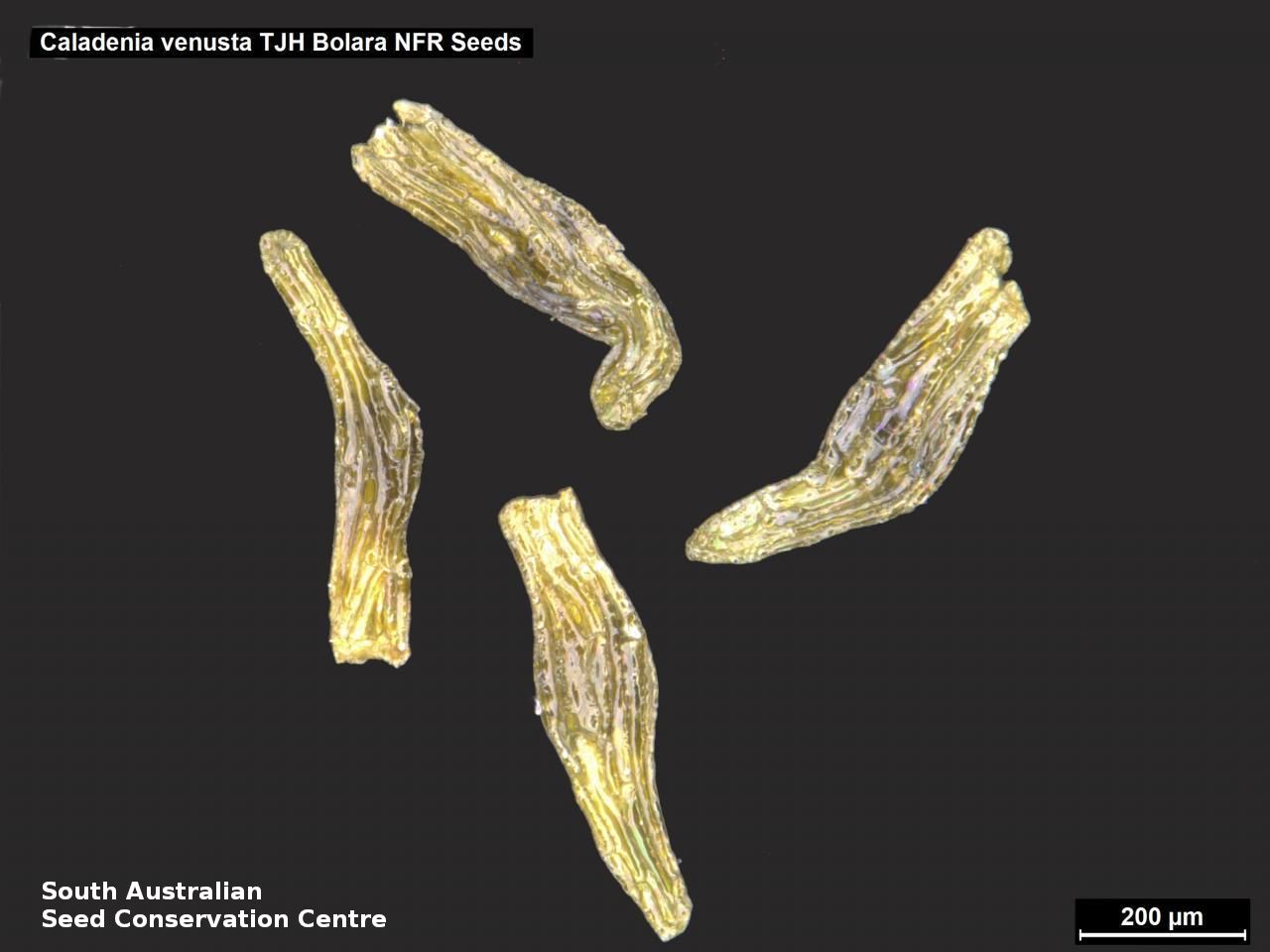


Botanical art
Prior names
Arachnorchis venusta
Calonema floribundum
Caladenia floribunda
Caladenia patersonii, partly
Common names
White Spider-orchid
Large White Spider-orchid
Etymology
Caladenia from the Greek 'callos' meaning beauty and 'aden' meaning a gland; referring to the colourful labellum and the glistening glands at the base of the column that adorn many of the species. Venusta from the Greek 'venusta' meaning attractive, graceful, alluding to the appearance of the plant.
Distribution and status
Found in the lower South-east in South Australia, growing in damp heathland, open forest and woodland. Also found in Victoria. Native. Very rare in South Australia. Rare in Victoria.
Herbarium region: South Eastern
NRM region: South East
AVH map: SA distribution map (external link)
Plant description
Annual terrestrial orchid growing from an underground tuber, to 60 cm tall with one or two large flowers and a single basal leaf. Flowers are white to pale pink with a toothed labellum, which has a red margin and red calli. Tepals are 12 cm long. Flowering between September and November. Fruits are brown papery ellipsoid capsule. Seeds are very small brown ellipsoid seed with a long translucent brown mesh-like covering.
Seed collection and propagation
Collect seeds between January and February. Collect fat capsules as they start to dry and turn brown. Pods will split and release the seeds quickly and will require monitoring. To increase the chances of collecting mature pods, it is recommended that a small breathable bag (ie. Organza bags) be used to enclose the developing capsules. Place the capsules in a container that will hold fine seeds and leave to dry for a few weeks or until the capsule split. Then carefully hold the capsule and tap it gently to release the seeds. Store the seeds with a desiccant such as dried silica beads or dry rice, in an air tight container in a cool and dry place, refrigerator or in liquid nitrogen. For the NVC South East Orchid Project three populations consisting of more than 70 individuals in total were recorded from Willalooka, Nangwarry and Bolara Native Forest Reserve. Approximately 1,020,000 seeds (0.65 g) were banked from these three populations. The seed viability for the collection made from Willalooka area was very low at 8%. The other collections were higher at 49% and 65%. Seed germination in Caladenia species is difficult without compatible mycorrhizal fungi.
| Location | No. of seeds (weight grams) | Number of plants | Date collected | Collection number Collection location | Date stored | % Viability | Storage temperature |
|---|---|---|---|---|---|---|---|
| BGA | 540,000 (0.374 g) | 12 pods | 25-Nov-2013 | T. Horn South Eastern | 1-Nov-2016 | 49% | -80°C |
| BGA | 380,000 (0.266 g) | 14 pods | 19-Nov-2013 | DJD2774 South Eastern | 1-Nov-2016 | 65% | -80°C |
Number of plants: This is the number of plants from which the seeds were collected.
Collection location: The Herbarium of South Australia's region name.
% Viability: Percentage of filled healthy seeds determined by a cut test or x-ray.